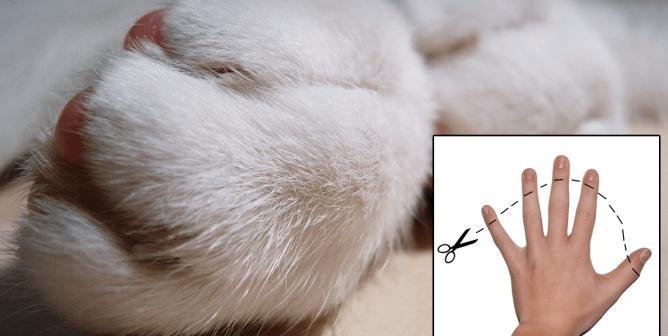Why Veterinarians are Saying No to Declawing Cats
posted: Dec. 18, 2019.

Why Veterinarians are Saying No to Declawing Cats
Recently, New York became the first state to ban feline declawing, calling it, “cruel and painful procedure that can create physical and behavioral problems for helpless animals.” Declawing has definitely been losing popularity in recent years, and many vet schools no longer teach the procedure to their graduates. Some veterinarians are still willing to declaw cats in situations where they feel the client has no other options, in order to prevent the animal being relinquished or euthanized.
Robin Downing, DVM, MS, DAAPM, DACVSMR, CVPP, CCRP, owner of the Downing Center for Animal Pain Management in Windsor, Colorado, recently lectured at the Fetch dvm360 conference in San Diego and said with regards to declawing, “we are creating pain, we are altering biomechanics, we are altering their activities of daily living … and we are interrupting natural behavior, because we know that scratching is a natural behavior”. Along with Dr. Downing, pet expert Steve Dale oppose declawing and tried to present effective solutions as alternatives to declawing. Read on for some of their suggestions.
Cat Scratching Posts
Scratching is a normal behavior for cats, and declawing is not a necessary procedure, according to the AVMA. “Scratching is acceptable, I believe,” Dale says. "Cats just need the right tools to help them scratch in the right places." It’s good to keep a cat scratching post near the front door or near windows and back doors. You can use catnip to encourage the cat to use it, or put toys on top. Cats like to be up high so get something tall and sturdy that the cat is interested in using. Think of it as a playground for your cat, that helps them with not only scratching, but play as well.
Discourage scratching in other areas
Even though it can be frustrating to see, it is important to not punish your cat for scratching in inappropriate places. If you punish your cat they may become resentful or fearful. Rather, try to encourage scratching on the scratching post. You can cover couches or other furniture with plastic or tin foil to keep the cat off of it. There is also a product called Sticky Paws that has a double sided adhesive that cats will avoid if you stick on furniture. A vinyl rug runner can also be used prickly side up in areas you want the cat to avoid.
It is also helpful to keep the cat’s claws trimmed.
Pheromones
Feliscratch by Feliway may be helpful to spray on the scratching post to attract the cat. This can be used along with catnip or toys. It even has a blue dye to indicate that the cat has scratched in that area!
Dr. Downing and Dale have made it their mission to educate people about declawing and point them to more natural and pain-free alternatives. The bottom line according to Dr. Downing is, “Cats would prefer to keep their toes”.